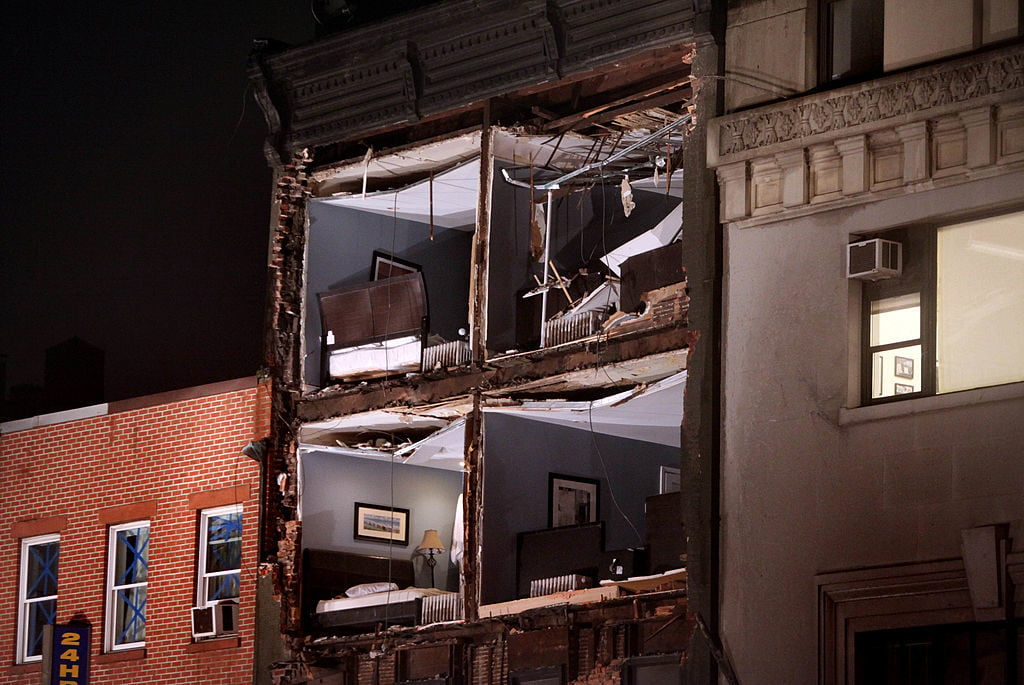Galleries
Will Chelsea Ever Recover From Hurricane Sandy?
Welcome to a world of pricey insurance premiums and off-site storage.

Welcome to a world of pricey insurance premiums and off-site storage.

Sarah Cascone

As we approach the second anniversary of Hurricane Sandy, which devastated parts of New York and New Jersey when it made landfall on October 29, 2012, many Chelsea galleries are still feeling the impact.
In the wake of the storm, which saw parts of Chelsea under as much as five feet of water, some dealers began to consider moving to higher ground. Casey Kaplan, owner of an eponymous West 21st street gallery, told the New York Observer for a recent story on the subject that he “more or less lost the gallery.” He is relocating to the Flower District, which he plans to finalize and open next year (see “Casey Kaplan Making Unorthdox Move to Flower District“). “It’s not a flood zone,” said Kaplan, of the new space on West 27th Street between Sixth and Seventh Avenues. “My insurance costs will be significantly less.”
For some Chelsea galleries, the impact didn’t extend to the loss of water-damaged inventory alone, but included long drawn-out insurance claims, jacked-up new premiums, court battles, and a need to invest in expensive storage space. In other cases galleries like Casey Kaplan simply moved.
A year after the much-hyped Hurricane Irene proved to be relatively benign, Sandy came as a surprise to the New York area. The preparations made for the storm by many art dealers proved inadequate, in spite of city-wide warnings and preparatory measures such as sandbags, temporary shelving, and nailing doors shut.
Printed Matter, a nonprofit dedicated to artist books located at West 22nd Street and 10th Avenue, was particularly hard-hit. The organization’s archive (which dated back to 1976) and its 9,000-book inventory were both stored in the basement, which was severely flooded. Because Printed Matter was considered a book store, not a gallery, and the insurance policy lacked a separate art rider, their policy did not cover the several hundred thousand dollars worth of damage.
Printed Matter is now one of several Chelsea art operations that has done away with basement storage. West 20th Street’s Jack Shainman Gallery stopped storing works in the basement and has opened a new location in the neighborhood that is specially outfitted to counteract flooding. More inventory has been moved to a new upstate outpost. Storage facilities in New Jersey, Queens, and less low-lying areas of Manhattan have also become popular.
Bortolami Gallery, on West 20th Street, now avoids keeping more than the minimum amount of art on site. Nonetheless, their insurance premiums still increased by 25 percent. They also added expensive storage space in New Jersey and Long Island City—a common tale in post-Sandy Chelsea.
Berkley Asset Protection
Nicholas Reynolds, vice president of Berkley Asset Protection, which covers many Manhattan art galleries, told the Observer for their story that since the storm “premiums have gone up for all galleries, but most of all for ground-floor galleries in Chelsea, 20, 25 or 30 percent.” For galleries that want flood coverage, basement storage is a no-no, and they must develop a plan to prepare for future disasters that includes exit strategies for valuable art, training for staff, and emergency supplies such as generators, fans, and cleaning tools.
To keep insurance premiums in check, many galleries are agreeing to policies that will only cover damages up to a certain amount. When domestic companies won’t offer them policies, art dealers sometimes turn to the worldwide insurer Lloyd’s of London, which can take on the local risk due to its international presence—but such last-resort coverage comes with higher premiums.
Though the physical damage of Sandy may be a thing of the past, the storm’s long-term economic effects on the New York gallery scene continue to be felt. Even exhibition schedules are now organized with a post-Sandy mindset, with dealers choosing to exhibit more delicate and fragile pieces outside of hurricane season.
Recovery may be over, but will Chelsea ever be the same?